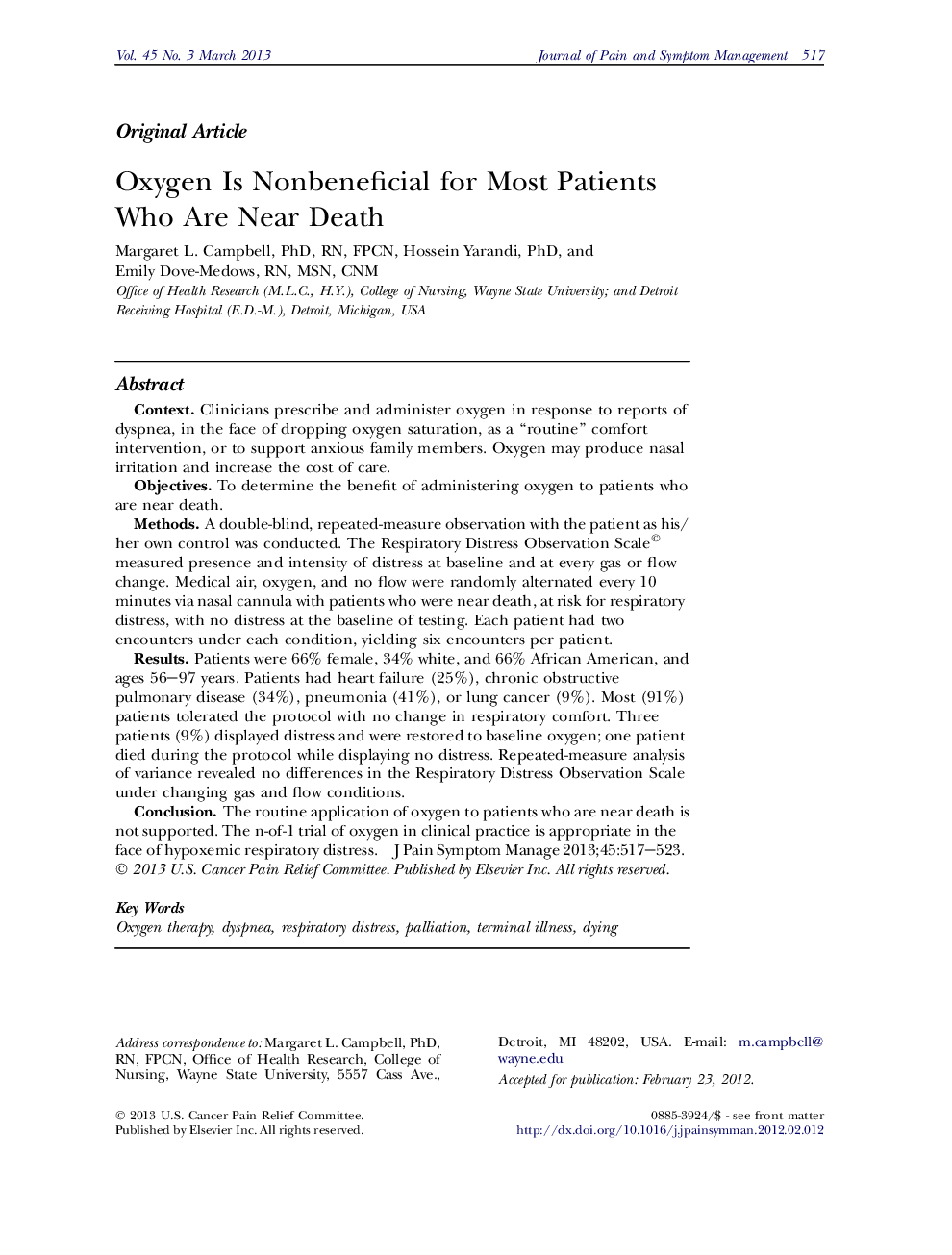| Article ID | Journal | Published Year | Pages | File Type |
|---|---|---|---|---|
| 2724358 | Journal of Pain and Symptom Management | 2013 | 7 Pages |
ContextClinicians prescribe and administer oxygen in response to reports of dyspnea, in the face of dropping oxygen saturation, as a “routine” comfort intervention, or to support anxious family members. Oxygen may produce nasal irritation and increase the cost of care.ObjectivesTo determine the benefit of administering oxygen to patients who are near death.MethodsA double-blind, repeated-measure observation with the patient as his/her own control was conducted. The Respiratory Distress Observation Scale© measured presence and intensity of distress at baseline and at every gas or flow change. Medical air, oxygen, and no flow were randomly alternated every 10 minutes via nasal cannula with patients who were near death, at risk for respiratory distress, with no distress at the baseline of testing. Each patient had two encounters under each condition, yielding six encounters per patient.ResultsPatients were 66% female, 34% white, and 66% African American, and ages 56–97 years. Patients had heart failure (25%), chronic obstructive pulmonary disease (34%), pneumonia (41%), or lung cancer (9%). Most (91%) patients tolerated the protocol with no change in respiratory comfort. Three patients (9%) displayed distress and were restored to baseline oxygen; one patient died during the protocol while displaying no distress. Repeated-measure analysis of variance revealed no differences in the Respiratory Distress Observation Scale under changing gas and flow conditions.ConclusionThe routine application of oxygen to patients who are near death is not supported. The n-of-1 trial of oxygen in clinical practice is appropriate in the face of hypoxemic respiratory distress.
